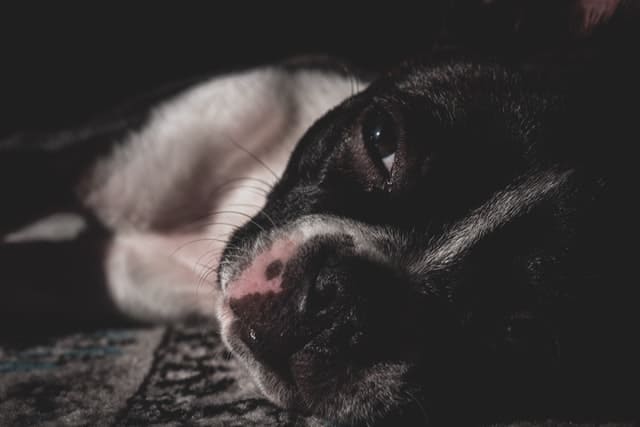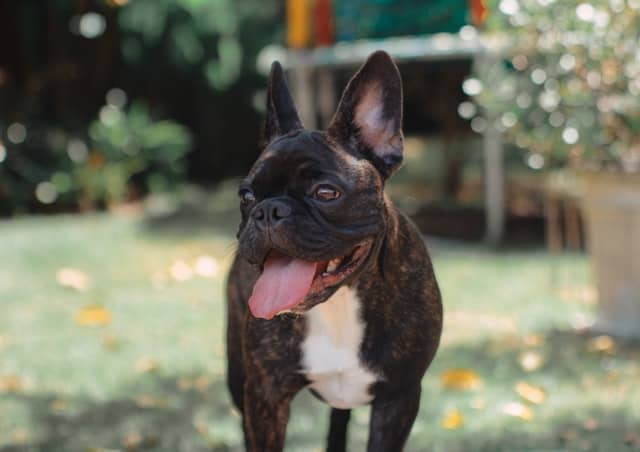
Crate training. In some circles, this is a controversial notion, but we’ve noticed that Frenchies love having a private space to call their own. It is a place for cuddles with their favorite blanky or toy, and a place to keep them out of harm’s way if you’re out for a bit. Experts say that it even helps with potty training! Win!
In this article, we explore crate training your Frenchie effectively, and with kindness and understanding.
Why Should I Crate Train?
For most of us, our pooches are part of the family, and, as with our human kids, our fur kids need rules and boundaries too. Our pups must know what not to chew, where not to poop, which areas are off-limits, and to listen when we give them simple instructions (like “no,” “stop,” and “go”).
Crate training is part of this. Many people don’t like the idea of putting their fur kid in an actual crate. You don’t have to have an actual box or enclosure – crate training could simply involve a doggy bed or a kids’ playpen. Whatever works for you. Many parents of fur kids find it useful to have some form of a crate where they can enclose their pup, though, since that keeps them out of harm’s way when they’ll be unsupervised for a few moments. It’s the same principle as a kids’ playpen.
Dogs are natural den animals. That means that, in nature, they seek a safe space to call their own. That’s why we need to offer them a crate or den in our home that is just theirs.
Additionally, Frenchies were bred as companion animals, so they suffer separation anxiety when their owners are out of sight. Like, when we go to work. Having a den to call home helps calm this anxiety.
At What Age Do I Start Crate Training?
Frenchies are incredibly intelligent. They can start crate training at any age, from the day you bring them home. Older Frenchies have also been successfully crate trained, although this generally takes longer than with puppies. It makes sense since dogs get set in their ways as they mature, just like their human parents.
The key is to make crate training fun. Like humans, dogs learn best when they’re having fun and seeing the process as a game. If you use toys, treats, and comfy blankets to lure your pup into his new den, he’ll associate it with comfort and be more eager to explore it. Forcing your pooch into the crate is definitely not the way to go, ever.
Also, remember that easy does it. If your pooch is a bit hesitant to explore his crate, give him some space, and try again later. There’s no rush – once you get it right, he’ll love his box for life. So, by taking it slow, you won’t spook him, giving him hangups about the crate in the process.
What Do I Need?
Since Frenchies are small dogs, you don’t need a big crate. Shop around for one that’s perfect for your pooch, preferably one that will fit Chomper when he’s fully grown. That way, you won’t have to buy a new one later, and he doesn’t have to get used to a new den that smells different from his old one. While “big enough” is often debatable, a good rule of thumb is that your pup should be able to move around comfortably in his crate.
The type of crate would also vary according to your needs and your pup’s personality. Standard options include wire crates, plastic travel crates, fabric travel crates, and playpens. There’s a slight difference in the application between crates and playpens.
Next, you need some stuff inside the crate. After all, what’s a home without furniture? So, for starters, the crate needs wall-to-wall carpeting. This ensures that your pup doesn’t get cold at night, especially in winter. Also, you need a comfy bed, his favorite toys, and a blanket. While it’s tempting to go all-out and splurge on the most lavish crate and decorations, you don’t have to. Your pooch just wants to feel warm, comfy, and happy. He doesn’t care about designer labels and all the fancy extras.
Frenchies are super intelligent, so the toys you put inside the crate will help them figure out what they’re allowed to chew on, and what not to chew. That’s another win for crate training! Also, the correct types of chew toys clean their teeth, an essential part of doggy hygiene. Picking interactive, breed-appropriate toys is vital to keep your pup stimulated while you’re away. Bored dogs get up to mischief, so keeping them engaged is essential.
Lastly, add some treats. Pups love their treats, so yours is far more likely to dive straight into the crate if it smells of yummies.
How Does Training Work?
With the wide variety of training methods available, your approach will vary from the next person’s. The details depend on you, your circumstances, and your pup’s personality. That said, effective training methods all have some basics in common. Here they are:
Place the Crate in the Correct Location
Dogs are pack animals, so your Milo wants to feel like part of the family, even when he’s inside the crate. So, place your pup’s crate in a room where your family spends lots of time.
That said, the crate should also serve as a quiet den for when your pup wants peace and quiet. With this in mind, pick a quiet corner of that room that’s out of the main traffic flow.
Explore The Crate
Your pup needs to know that the crate is a safe, fun space. When you introduce your pooch to the crate, make a big deal of it to communicate how cool his new den is, and how much you like it. Fuss over your pooch, giving him lots of love. Then, put him in his crate and let him find all the cool stuff you put in there. Give him enough time to explore and get all excited about this awesome new home.
Barking is Normal
Some dogs will make quite a scene when you put them in the crate. This is perfectly fine and won’t harm them. If your Milo barks, whines, and fusses, let him carry on until he’s tired of it – it won’t last more than a few minutes. Once he settles, he’ll be fine, and probably start playing with all those cool toys again.
Let Him Out
Once your pup settles down, let him out of the crate and take him straight outside to pee. If your Milo didn’t make a fuss, let him out after five minutes. Taking your pup outside for a pee serves as part of potty training, too, so that’s an extra win.
Why does it work for potty training, though? Well, contrary to popular belief, dogs are pretty clean animals. They like a clean den, so they won’t poop where they sleep. Once your pooch associates his crate with sleep, he definitely won’t poop or pee there, unless you let him stay in there for longer than he can hold it in. Being in the crate encourages your pup to hold it in for a bit longer.
Carrying it Through
When you repeat the above process several times a day, your Milo will get the hang of this crate thing after a few days. Every time he goes into the crate willingly, give him tons of praise and some treats. This positive affirmation shows that he’s doing well and gives him more confidence. Then, when you let him into the crate again, leave him there for a bit longer. Soon, he’ll realize that the crate is a nice place and will start napping there just because he can.
If you’re going to use the crate to contain your pup while you’re away at work, or during the night, it’s essential to vary your routine a bit. That way, they don’t associate a specific time of the day as “banishment” time, and they’re less likely to get all emotional when you put them in the crate. If your pup sees “crate time” as a fun time at a random point in the day, they’ll be more eager to get in and remain content. This minimizes separation anxiety, making things easier for both of you.
In Closing
Crate training is an important part of a Frenchie’s road to adulthood. These pups suffer from separation anxiety, so having a safe space to call their own is essential. This is especially true when their human parents go away for a bit, like when they go to work. Crate training helps with potty training too, since your pooch won’t poop where he sleeps. Dogs are much more hygienic than most people realize.
When crate training, it’s essential to take things slow, allowing your pup time to get used to the idea and making their crate their own. This slow and steady approach pays off in the long run.
Photo Credits
¹ Photo by Andrew Faires on Unsplash




